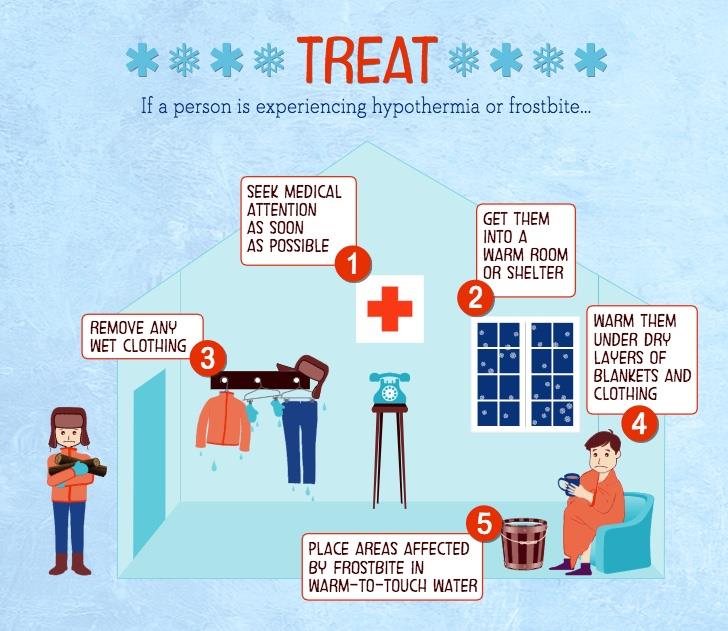Severe cold temperatures have been in the news recently with a good portion of North America hit by a “polar vortex”’ and “bomb cyclone” ( . . . brrr!). Of course, freezing weather is no excuse to stay inside all winter, but when you do go outside for some fresh air and exercise, make sure you protect yourself against hypothermia and frostbite. When tissue is frostbitten, skin cells may become permanently damaged. Here is some information and tips to help protect you.
What is frostbite?
Frostbite occurs when bodies’ skin and tissue begin to freeze in temperatures below 0 C. The further away from the center of mass – such as toes, fingers, the tip of the nose, cheeks or ear lobes – then the most susceptible to the cold. Below freezing, blood vessels begin to constrict, as this hard-wired survival technique pushes blood closer to the heart and other vital organs in order to maintain the body’s core temperature. The longer time that parts are affected, the greater the chance there is for permanent damage. It only takes minutes for exposed skin to become frostbitten when the temperature falls below -7 C and the wind is blowing at more than 30kph.
What are the symptoms of frostbite?
If you are feeling the effects of frostbite you will first notice tingling, pain and numbness in the area affected. The skin will begin to change color from bright red to white or gray and then will become cold to the touch. By this point there may be a loss of feeling and eventually the skin will blacken and form a tough outer layer. If your fingers are affected, you may notice clumsiness from loss of motor control. If it is not alleviated quickly, the chance of deeper tissue damage increases as well as the possibility of amputation.
What are the risk factors for frostbite?
According to the Mayo Clinic the following factors will increase your risk of frostbite:
- Dehydration, exhaustion, diabetes and poor blood flow in your limbs.
- Smoking, drinking alcohol or drug abuse.
- Fear, panic or mental illness, if it inhibits good judgment or hampers your ability to respond to cold.
- Previous exposure to frostbite.
- Being an infant or elderly, who both have a hard time of maintaining and regulating body heat.
Treatment for frostbite
- Seek medical attention right away. If this is not possible, rewarm the affected area in warm, not hot, bath water. The water should feel comfortable to unaffected parts.
- Give warm fluids – not alcohol!
- During rewarming, the area will show signs of adequate circulation returning. It may become extremely painful, red and blotchy, which is normal.
- Wash with soap and water then wrap sterile gauze or cloth, separating the fingers and toes. When possible raise the affected part after rewarming to decrease swelling and pain.

How to prevent frostbite?
- Limit your time in cold, wet, windy weather. Remember exposed skin can become frostbitten in minutes in certain circumstances.
- Dress appropriately. Wear loose, layered clothing that provides insulation, wicks away moisture and has ventilation. Fabrics such as gortex provide great protection against water and wind.
- Look for gaps in your clothing that might expose you to the cold.
- Mittens, because they keep your fingers huddled together, thus providing more warmth than gloves. Wearing a bulky wool sock over a lighter cotton one will keep your feet toasty.
- Cold feet and hands going into cold boots and gloves will remain that way. Warm up both beforehand to help retain heat.
While our winter this year is looking mild so far, touch wood, there is no reason why this couldn’t change quickly. When the temperature starts taking a dive make sure you are prepared for the cold and issues that may come from it. A little bit of preparation and understanding of the warning signs will mean pain-free, safe fun outside this winter.




